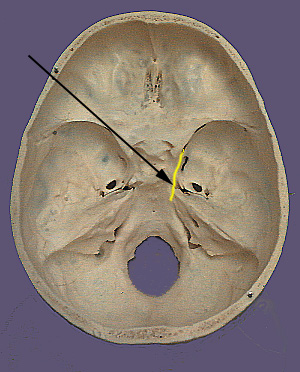
CN III. Oculomotor Nerve
The oculomotor nerve originates from motor neurons in the oculomotor (somatomotor) and Edinger-Westphal (visceral motor) nuclei in the brainstem. Nerve cell bodies in this region give rise to axons that exit the ventral surface of the brainstem as the oculomotor nerve. The nerve passes through the two layers of the dura mater including the lateral wall of the cavernous sinus and then enters the superior orbital fissure to access the orbit. The somatomotor component of the nerve divides into a superior and inferior division. The superior division supplies the levator palpebrae superioris and superior rectus muscles. The inferior division supplies the medial rectus, inferior rectus and inferior oblique muscles. The visceromotor or parasympathetic component of the oculomotor nerve travels with inferior division. In the orbit the inferior division sends branches that enter the ciliary ganglion where they form functional contacts (synapses) with the ganglion cells. The ganglion cells send nerve fibers into the back of the eye where they travel to ultimately innervate the ciliary muscle and the constrictor pupillae muscle.






